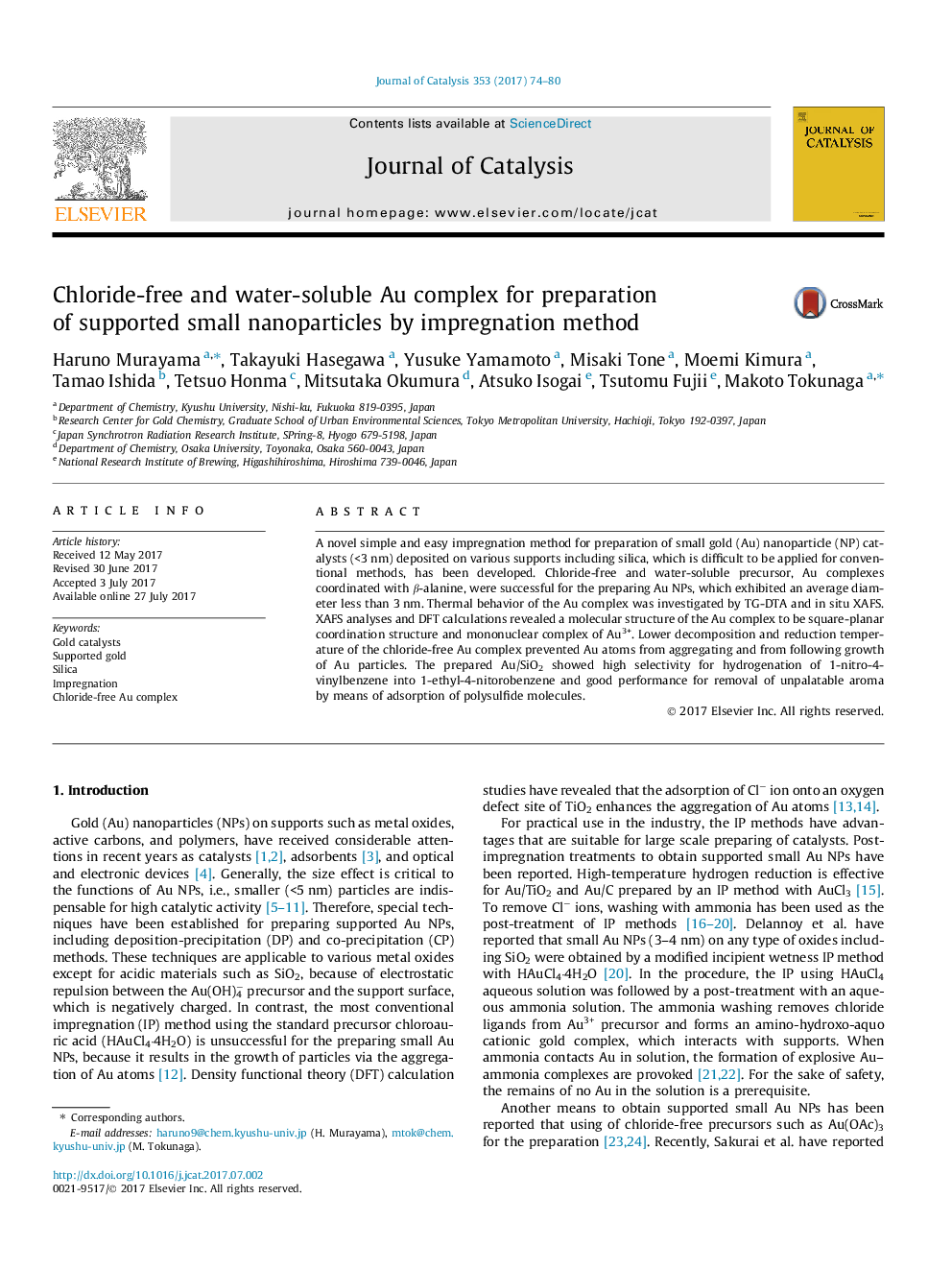| Article ID | Journal | Published Year | Pages | File Type |
|---|---|---|---|---|
| 6455550 | Journal of Catalysis | 2017 | 7 Pages |
â¢Small Au nanoparticles (<3 nm) were prepared on various supports by impregnation.â¢Chloride-free Au complex prevents Au atoms from aggregating.â¢Decomposition temperature of the Au complex is lower than that of HAuCl4.â¢The Au/SiO2 hydrogenates vinyl group of 1-nitro-4-vinylbenzene selectively.â¢The Au/SiO2 can be applied for adsorption of unpalatable aroma in drink.
A novel simple and easy impregnation method for preparation of small gold (Au) nanoparticle (NP) catalysts (<3 nm) deposited on various supports including silica, which is difficult to be applied for conventional methods, has been developed. Chloride-free and water-soluble precursor, Au complexes coordinated with β-alanine, were successful for the preparing Au NPs, which exhibited an average diameter less than 3 nm. Thermal behavior of the Au complex was investigated by TG-DTA and in situ XAFS. XAFS analyses and DFT calculations revealed a molecular structure of the Au complex to be square-planar coordination structure and mononuclear complex of Au3+. Lower decomposition and reduction temperature of the chloride-free Au complex prevented Au atoms from aggregating and from following growth of Au particles. The prepared Au/SiO2 showed high selectivity for hydrogenation of 1-nitro-4-vinylbenzene into 1-ethyl-4-nitorobenzene and good performance for removal of unpalatable aroma by means of adsorption of polysulfide molecules.
Graphical abstractDownload high-res image (84KB)Download full-size image
